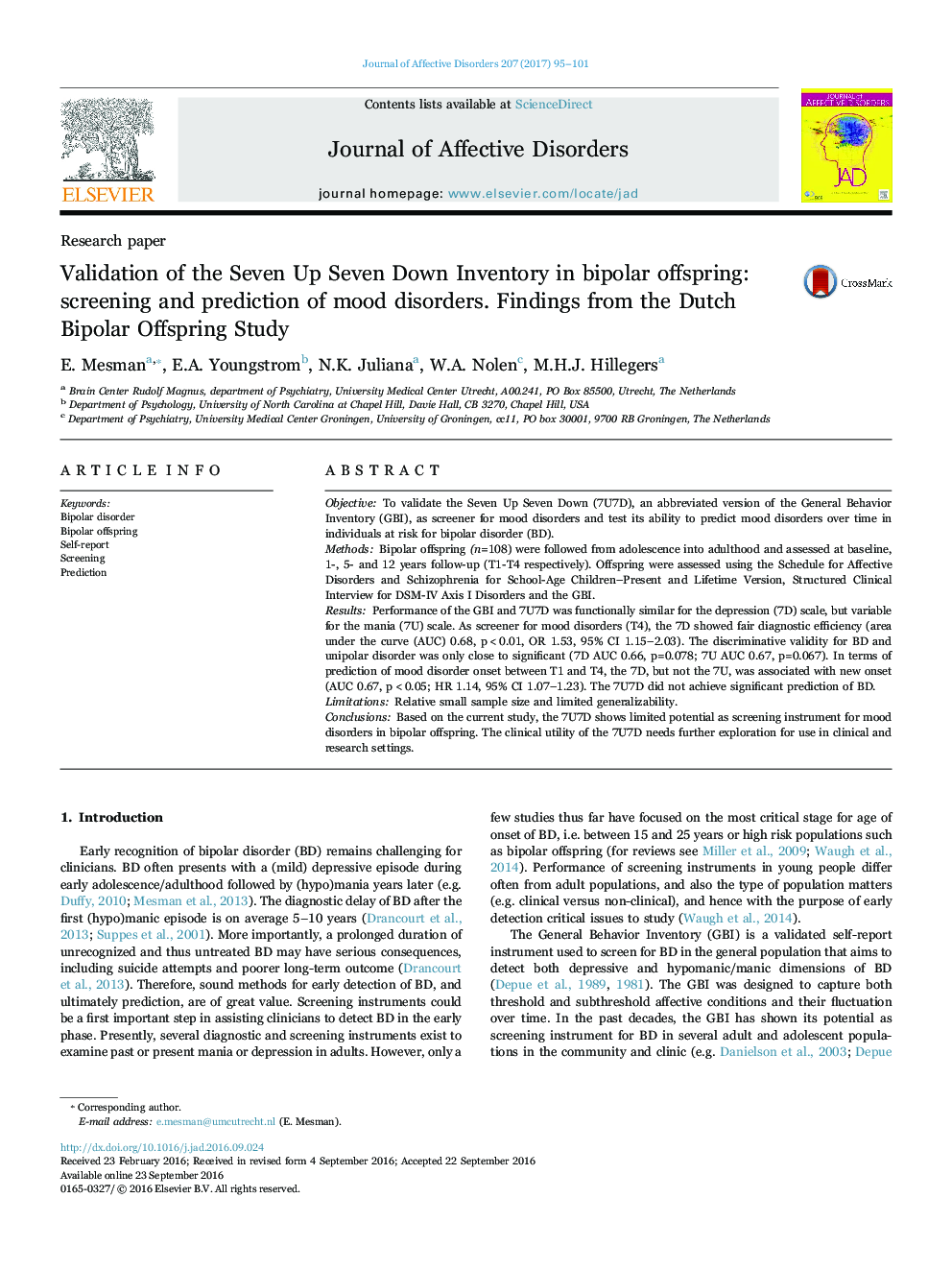| Article ID | Journal | Published Year | Pages | File Type |
|---|---|---|---|---|
| 6229476 | Journal of Affective Disorders | 2017 | 7 Pages |
â¢A validation study of a brief screening instrument for mood disorders among bipolar offspring.â¢Psychometrically, the 14-item 7U7D and 73-item GBI performed similarly.â¢The 7D, but not the 7U, showed some potential as screener for (new) mood disorders.â¢The 7U7D did not distinguish between BD versus unipolar depression.â¢Based on this study, the utility of the 7U7D as screener is considered limited.
ObjectiveTo validate the Seven Up Seven Down (7U7D), an abbreviated version of the General Behavior Inventory (GBI), as screener for mood disorders and test its ability to predict mood disorders over time in individuals at risk for bipolar disorder (BD).MethodsBipolar offspring (n=108) were followed from adolescence into adulthood and assessed at baseline, 1-, 5- and 12 years follow-up (T1-T4 respectively). Offspring were assessed using the Schedule for Affective Disorders and Schizophrenia for School-Age Children--Present and Lifetime Version, Structured Clinical Interview for DSM-IV Axis I Disorders and the GBI.ResultsPerformance of the GBI and 7U7D was functionally similar for the depression (7D) scale, but variable for the mania (7U) scale. As screener for mood disorders (T4), the 7D showed fair diagnostic efficiency (area under the curve (AUC) 0.68, p<0.01, OR 1.53, 95% CI 1.15-2.03). The discriminative validity for BD and unipolar disorder was only close to significant (7D AUC 0.66, p=0.078; 7U AUC 0.67, p=0.067). In terms of prediction of mood disorder onset between T1 and T4, the 7D, but not the 7U, was associated with new onset (AUC 0.67, p<0.05; HR 1.14, 95% CI 1.07-1.23). The 7U7D did not achieve significant prediction of BD.LimitationsRelative small sample size and limited generalizability.ConclusionsBased on the current study, the 7U7D shows limited potential as screening instrument for mood disorders in bipolar offspring. The clinical utility of the 7U7D needs further exploration for use in clinical and research settings.
